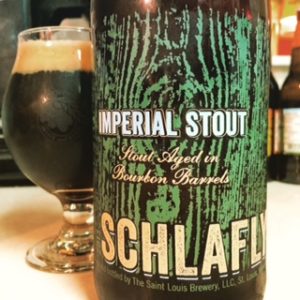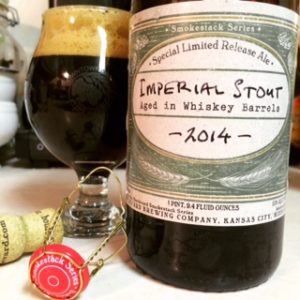
Editor’s Note: This biweekly column is sponsored by Dominion Wine and Beer (107 Rowell Court, Falls Church). It is written by Garrett Cruce, a Certified Beer Server in the Cicerone Certification Program.
I sat in the cavernous tasting room at Tröegs Brewing Co. pondering the deep golden red of my Nugget Nectar just days after its annual release.
The place was wall-to-wall beer lovers — two men at our table were in town from upstate New York. It occurred to me that this beloved hoppy red ale was a sign that this category of beer (splitting the difference between a pale ale and a brown ale) still has legs. It’s so important to Tröegs that the wall just inside the entrance is decorated with a two-story decal of the Nugget Nectar hop squeezing fist.
In the early days of the American microbrew movement, American brewers used the term “amber” to help beer consumers differentiate this hoppy, reddish ale from paler colored pale ales. Ironically, the earliest amber ales were actually pale ales that matched the darker color of European pales.
American consumers were confused, however, as they expected pale ales to be light in color. The name stuck and became a legitimate category of beer.
The American amber ale is characterized by its balance of moderate to high hop and malt flavors. Typically, amber ales are hoppier (with the piney or citrusy American hops) than brown ales and maltier than American pale ales.
This style has included American red ales, Irish red ales and American versions of the British style, Extra Special Bitters.
More often than not, though, an American amber ale consistently matches the flavor profile above. Below, let’s look some amber ales that run the gamut from the typical, hoppy style to more old-fashioned malt-balanced reds.
 Tröegs Brewing Co. Nugget Nectar Imperial Amber Ale (7.5% ABV)
Tröegs Brewing Co. Nugget Nectar Imperial Amber Ale (7.5% ABV)
This perennial favorite is a classic example of this style. The hops burst forward in the piney aroma and floral flavor. Malt takes a back seat in this ale, but it’s not overly bitter either. It also lacks the alcohol-derived sweetness of other imperial ales, which makes this a sneaky beer. It’s so drinkable, that you’ll want to be a bit careful with this slightly strong beer. It’s no wonder that this Pennsylvania beer is sought after every year. You can enjoy this anytime.
 Apocalypse Beer Works Red Hoppocalypse Imperial Red Ale (8% ABV)
Apocalypse Beer Works Red Hoppocalypse Imperial Red Ale (8% ABV)
Brewed by the wildly original Virginia brewery, Apocalypse Beer Works, Red Hoppocalypse won the silver medal at the 2014 U.S. Open Championship. I can see why. The aroma of this tasty local beer is a caramel malt that is spiced with hops, very much like a malt-forward imperial IPA. There is a spicy sweetness in the flavor that starts with the sip and continues through after you swallow. The finish is all the more interesting as the black tea-like hop flavor adds a complexity that I wasn’t anticipating. This is one of two of their beers that are currently available in cans, the rest you can only get in kegs.
 Terrapin Beer Co. Mosaic Red Rye IPA (6.3%)
Terrapin Beer Co. Mosaic Red Rye IPA (6.3%)
Terrapin’s seasonal red is quite the complex beer. On the one hand, it’s an amber, on the other, it’s an IPA — and then there’s the rye. Not to mention the fact that they’ve made it with only Mosaic hops — a newish hop variety that seems to burst with all the major American hop characteristics (floral, piney, citrusy, earthy, tropical fruit and so on). The aroma is on the earthy hop side, masking any maltiness. You really get the complexity of this beer in the flavor: Spicy rye combines with big citrusy hops and a dry malt to create a thoroughly enjoyable beer. These cans won’t be around long, get them while you can.
 Three Notch’d Brewing Hydraulion Red Ale (5.3% ABV)
Three Notch’d Brewing Hydraulion Red Ale (5.3% ABV)
Named after the only fire engine that the University of Virginia’s first fire department owned, Hydraulion is a tribute to Three Notch’d Brewing’s hometown. It’s also like a bit of history itself. Eschewing the hoppy ambers and reds of today, Three Notch’d has made a malt-balanced red ale, truly in the Irish tradition. The addition of the English Golding hops, rather than an American variety means that the hops will be more subtle. Though this beer does not lack hop bitterness altogether, it’s definitely not pronounced. What you get, instead, is a tasty malty brew that is pleasantly offset by a slight hop bitterness around the edges. You can’t go wrong with this 2014 Great American Beer Festival Bronze medal winner for Irish-style ales.
These ambers are now available at Georgetown Square Wine and Beer, but I have a couple more that I have to tell you about.
My first is Laurel, Maryland’s Jailbreak Brewing Co. Infinite Amber Ale, a local amber that nicely walks the line between malt and hops. It’s the very definition of the American Amber Ale. It’s only available on tap — I had it at Georgetown Square’s sister store, Downtown Crown Wine and Beer.
My second must-share amber is New Jersey’s Carton Brewing Co. Red Rye Returning Ale, which combines several American hop varieties with the spiciness of rye to create an immensely quaffable amber that’s full of flavor. I had this at a great little craft beer restaurant in the East Village in New York called Cooper’s Craft and Kitchen. Now, tell me about your favorite ambers. Cheers!
The views and opinions expressed in the column are those of the author and do not necessarily reflect the views of ARLnow.com.
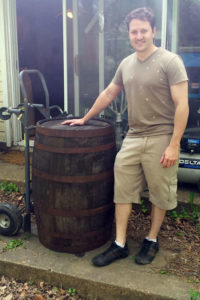 A new production brewery could be on its way to Arlington, on Four Mile Run Drive near Shirlington.
A new production brewery could be on its way to Arlington, on Four Mile Run Drive near Shirlington.










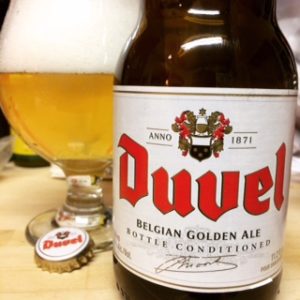
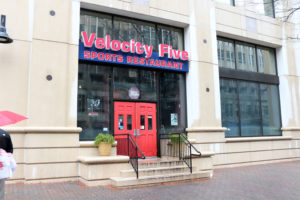 Velocity 5, the sports bar mainstay in Courthouse, is getting a makeover this spring into what its owners call “an American beer garden.”
Velocity 5, the sports bar mainstay in Courthouse, is getting a makeover this spring into what its owners call “an American beer garden.”